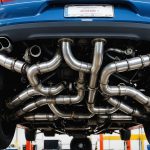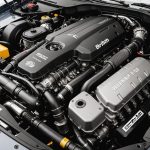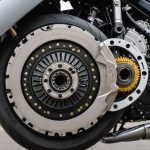Benefits of Adding a Heads-Up Display
Incorporating a heads-up display (HUD) into your vehicle offers a multitude of advantages, the most significant being enhanced safety features. These displays minimize distractions by presenting crucial information directly in the driver’s line of sight. No longer will you have to glance away from the road to check your speed, as a HUD allows you to receive this data seamlessly and safely, preserving focus on the task at hand.
Beyond safety, these displays significantly enhance the driving experience through the integration of real-time data. Imagine accessing navigation commands, speed limits, and other relevant information without diverting your attention from the road. This enhanced connectivity not only simplifies your journey but adds a layer of modernity and efficiency which is particularly appealing to tech-savvy drivers.
In the same genre : Ultimate guide to premium soundproofing solutions for your british luxury car”s engine bay
Moreover, installing a heads-up display can bolster the vehicle enhancement aspect by increasing its market value. This sleek technology provides a modern appeal, making any vehicle stand out as updated and tech-forward. Whether you’re upgrading a classic model or looking to resell in the future, a HUD ensures your car is equipped with a feature that many prospective buyers may consider essential in today’s technologically advanced world.
Types of Heads-Up Displays
Types of Heads-Up Displays (HUDs) offer a range of options for those looking to enhance their driving experience. Different heads-up display options cater to various preferences and technology overview perspectives.
Additional reading : Maximize your ride: key torque specifications for british sports car engines
Windshield-mounted HUDs
Windshield-mounted HUDs project important data directly onto the vehicle’s windshield. This type offers a seamless experience as drivers can view information such as speed and navigation without diverting their gaze. Often found in luxury vehicles, they provide an elegant and cutting-edge option.
Combo HUDs (Reflective and HUD Technology)
Combo HUDs incorporate a reflective element with HUD technology for a dual display approach. This design balances flexibility and functionality, allowing drivers to have a visual at both dashboard level and windshield level. Such types are popular among tech enthusiasts and those who appreciate detailed information at a glance.
Smartphone-based HUDs
Smartphone-based HUDs utilise phone apps to reflect information onto a separate display surface. They are a cost-effective and versatile solution, ideal for drivers looking for temporary or budget-friendly HUD options. These HUDs can easily be adapted to suit different models, facilitating customisation and mobility without the high cost of integrated systems.
Installation Steps for Heads-Up Displays
Successfully installing a heads-up display (HUD) requires careful attention to detail and the right tools. Here’s a concise HUD installation guide to get you started.
The installation begins with gathering essential tools, such as a screwdriver set, adhesive pads, and an anti-slip mat. For those considering a DIY heads-up display, these are vital to ensure a stable installation.
-
Positioning the HUD: Begin by selecting a suitable location on your dashboard. Ensure it doesn’t obstruct your view and aligns with the electronic system.
-
Connecting to Power: Depending on your HUD options, you might need to connect the device to your vehicle’s power source — usually the cigarette lighter or a dedicated USB outlet.
-
Attaching HUD: Use adhesive pads to mount the device securely. A mat can prevent slippage, maintaining display stability during driving.
Adhering to installation tips promotes a seamless setup. Test display visibility before finalizing the position. Maintaining good cable management is crucial to prevent distractions. Most importantly, always consult your HUD’s manual to address any model-specific requirements. Following these steps can lead to a successful setup, ensuring you reap the full benefits of a heads-up display.
Maintenance and Troubleshooting for Heads-Up Displays
Routine care and troubleshooting of your heads-up display (HUD) ensure continued performance and longevity. Understanding basic HUD maintenance is essential for preventing common issues that can arise during long-term use, keeping your display clear and functional.
Routine Maintenance Practices
Regular cleaning is vital. Use a microfiber cloth to gently wipe down the HUD surface, preventing dirt and residue buildup. Ensure the HUD’s lenses or reflective surfaces remain streak-free, especially for combo HUDs, to maintain image clarity.
Identifying Common Issues and Solutions
Flickering or dim displays can often indicate power issues. Check connections to the power source and ensure cables are secure. If visibility is poor, adjust the positioning as per installation instructions to optimize display readability in varying light conditions.
When to Seek Professional Help
For persistent malfunctions such as software glitches or hardware failures, consulting an expert is advisable. A professional can offer precise solutions, from recalibration to part replacements, ensuring you make informed decisions about repairs.
Care tips contribute significantly to the optimal functioning of a HUD. Recognizing signs that maintenance or repairs are needed preemptively extends its life span. Remember, investing in proper upkeep not only conserves quality but also safeguards your driving comfort.
Vehicle Compatibility with Heads-Up Displays
Exploring HUD compatibility across various vehicle types ensures seamless integration and maximizes their benefits. Evaluating your vehicle’s technical specifications is fundamental in achieving an ideal setup, especially in luxury vehicle models.
Specific British Luxury Brands and Models
Many British luxury vehicle models are equipped to handle cutting-edge technology like HUDs. Brands such as Jaguar and Bentley frequently offer factory-installed options, providing the full advantages of HUD technology without the need for modifications.
Compatibility Checks and Considerations
Assessing compatibility involves understanding the car’s existing technology. Not all HUD options fit every model, making it crucial to conduct thorough compatibility checks. Evaluate your vehicle’s dashboard design, electrical system, and available connectivity options before investing in a HUD.
Aftermarket vs. Factory-Installed HUDs
Choosing between aftermarket and factory-installed HUDs depends on your preferences for customization and budget. Factory-installed HUDs generally offer better integration and reliability, seamlessly fitting with the car’s current aesthetics and systems. However, aftermarket options provide flexibility, allowing owners to adapt systems to personal requirements, often at a lower cost.
Selecting a vehicle enhancement solution that aligns with your car’s architecture ensures optimal HUD performance and future-proofs your investment.
Cost Estimates for Installing a Heads-Up Display
Understanding the HUD pricing landscape is crucial for making informed decisions. The cost of a heads-up display varies significantly, typically ranging from £50 to £500 for the unit itself. Installation costs can further add £100-£300, depending on complexity.
Multiple factors influence this cost variability. The type of heads-up display chosen, whether it’s a windshield-mounted, combo, or smartphone-based HUD, impacts the price. Another aspect to consider is whether you opt for a DIY installation or professional service. Professional installation ensures optimal function and minimizes errors, potentially leading to additional costs if DIY mishaps occur.
While initial expenses might seem high, the value analysis of a HUD in a luxury vehicle enhancement offers significant benefits. It modernises the vehicle, enhancing its appeal, and can potentially increase resale value. Owners of high-end cars, such as Jaguar or Bentley, often see HUDs as essential rather than optional, further justifying the investment due to the added sophistication and technology integration. Budgeting for a heads-up display involves balancing these costs against the long-term benefits of enhanced driving safety and vehicle modernization.











